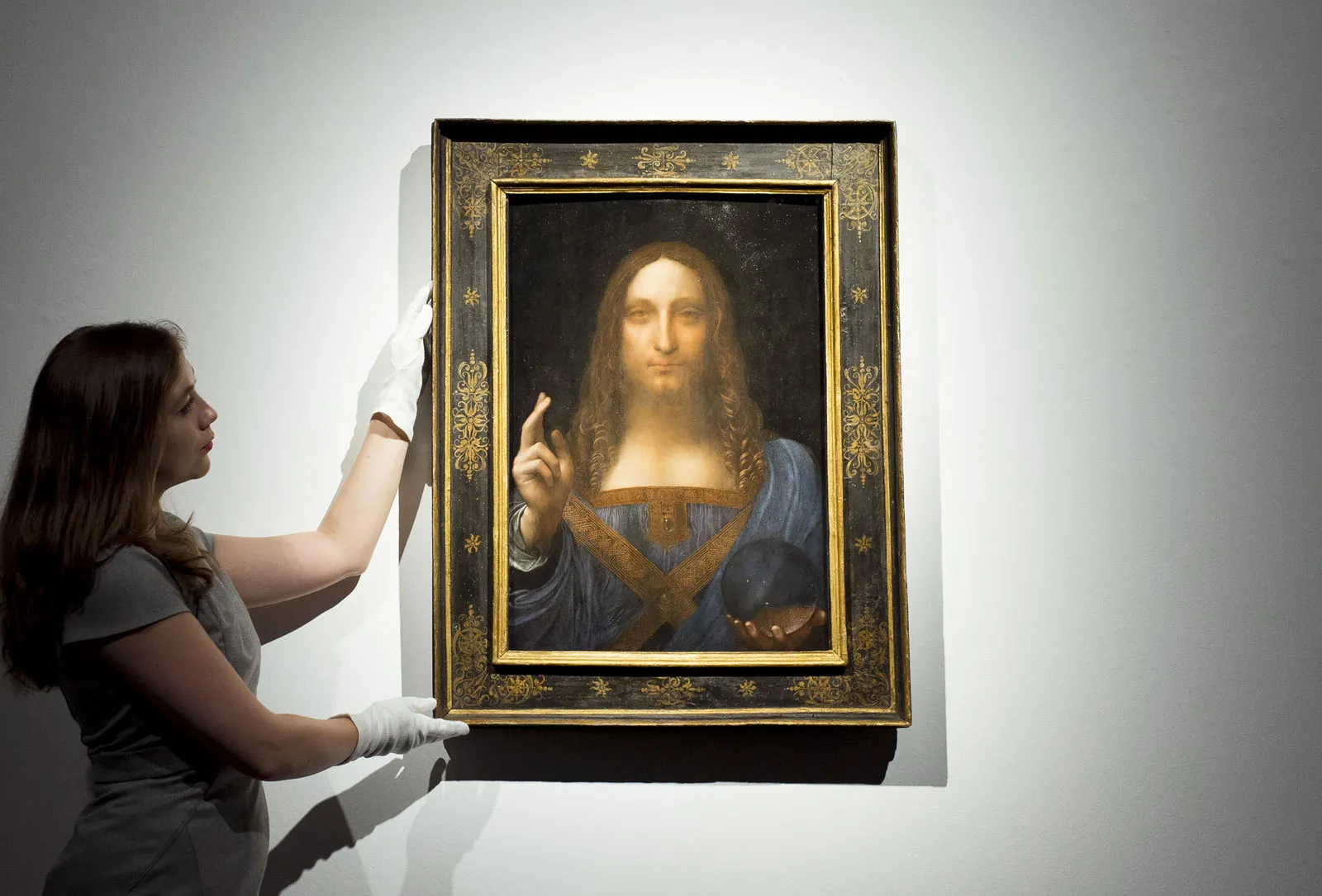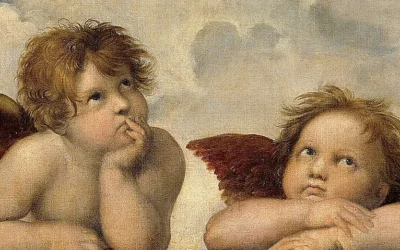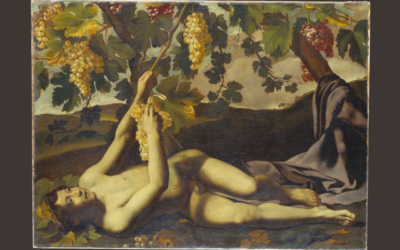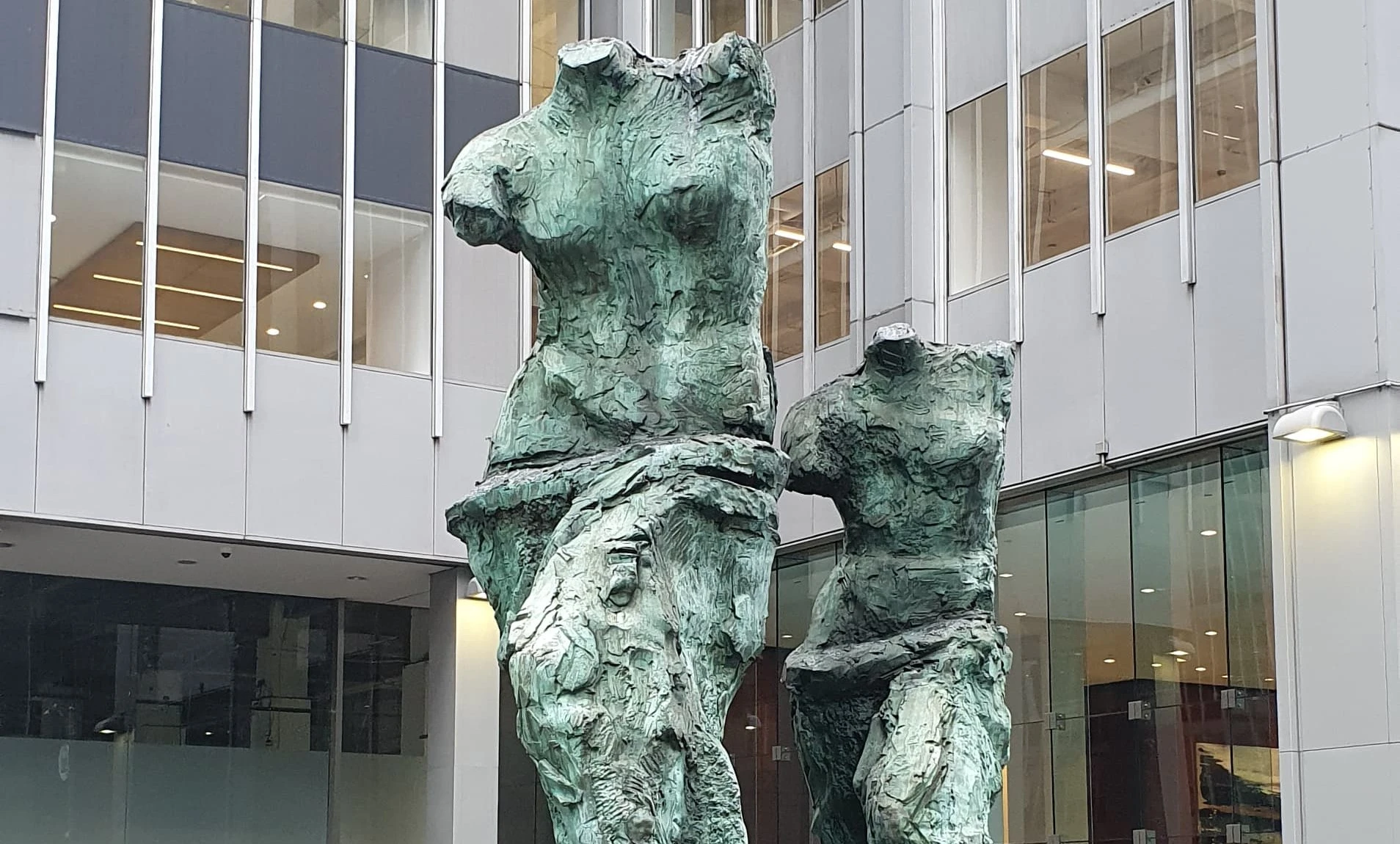Most mysterious paintings cover image: © Geoff Pugh—REX/Shutterstock.com
Salvator Mundi “Savior of the World” is one of the most expensive and controversial paintings. However, in our view, it does not make it onto our most mysterious paintings shortlist.
Art has the ability to evoke a wide range of emotions and reactions in people, and some paintings are particularly enigmatic and mysterious. Here are five of the most mysterious paintings in the history of art.
The Mona Lisa by Leonardo da Vinci

The Mona Lisa, also known as La Gioconda or La Joconde, is a portrait painting created by the Italian artist Leonardo da Vinci between 1503 and 1506. The painting depicts a seated woman, believed to be Lisa Gherardini, the wife of Francesco del Giocondo.
The painting’s fame is due in part to the subject’s enigmatic expression, which is often described as a slight smile. The subject’s eyes seem to follow the viewer around the room, giving the impression that she is alive and aware. The smile is subtle and appears to change depending on the viewer’s perspective and the lighting conditions. This has led to much speculation about the subject’s true emotions and has made the painting one of the most studied and analyzed works of art in history.
Another reason for its fame is the painting’s history, which has been marked by theft, damage, and restoration. The painting was stolen from the Louvre in 1911 and was not recovered until 1913. The painting has also been damaged over the years and has undergone multiple restorations.
The identity of the subject has also been subject to much speculation. While it is widely believed to be Lisa Gherardini, the wife of Francesco del Giocondo, some experts believe that the painting may be a self-portrait of Leonardo da Vinci himself.
Lastly, its fame is also due to the amount of attention it has received over the centuries. The Mona Lisa is one of the most famous, recognizable and mysterious paintings in the world, and has been the subject of countless books, articles, and documentaries. It’s also one of the most visited paintings in the world and it’s also known as the most valuable painting in the world.
The Arnolfini Portrait by Jan van Eyck
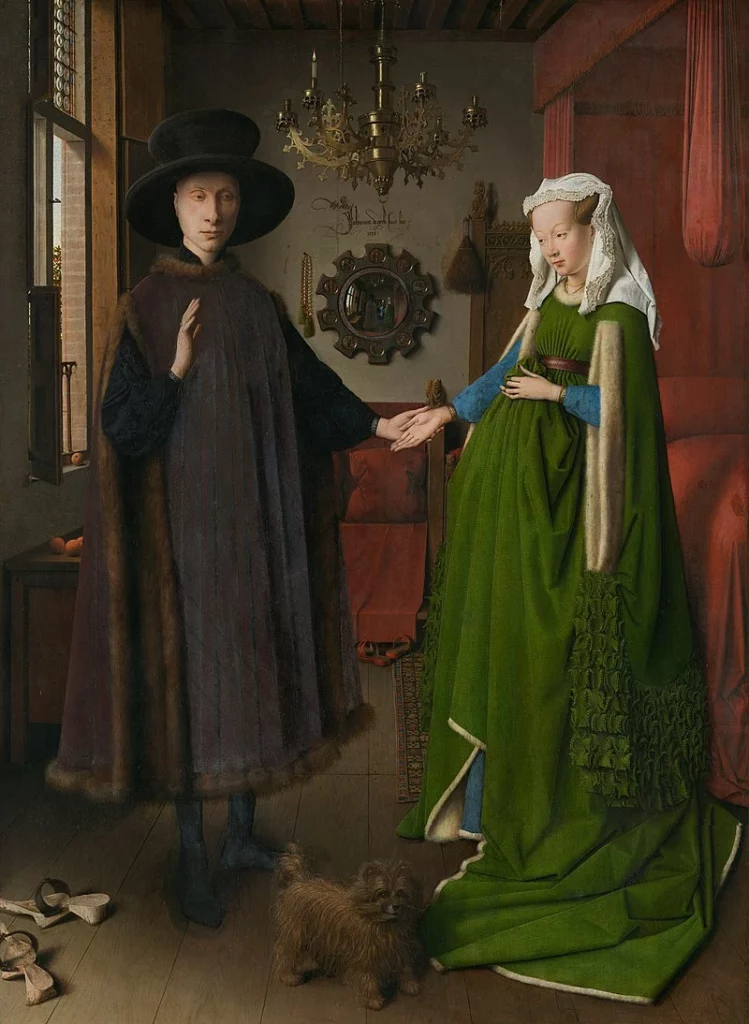
The Arnolfini Portrait, painted by Jan van Eyck in 1434, is considered one of the most mysterious paintings due to the many hidden symbols and meanings that have been discovered within the image. The painting depicts a man and a woman standing in a room, with the man holding a brass candelabrum and the woman holding her rounded belly. The couple is identified as Giovanni di Nicolao Arnolfini and his wife, Giovanna Cenami.
One of the most striking aspects of the painting is the level of detail and realism that van Eyck was able to achieve. The room in which the couple stands is rendered in incredible detail, with intricate patterns and textures covering every surface. The couple themselves are also depicted with a high degree of realism, with each strand of hair and wrinkle on their clothing visible.
However, it is the symbolism within the painting that has led to much speculation and interpretation. The brass candelabrum that the man holds has been interpreted as a symbol of the couple’s wealth and status, while the dog in the foreground has been seen as a symbol of loyalty and fidelity. The convex mirror in the background reflects the couple’s image as well as other figures, including the artist himself, this has led to the interpretation that the painting is a sort of ‚witness‘ to the couple’s marriage.
Another interesting aspect is the woman’s gesture of touching her rounded belly, which has led to speculation that she may be pregnant. This interpretation is supported by the presence of a chandelier with two burning candles, which was a symbol of the expectation of a new birth, and the presence of a dog, an animal that was a symbol of fertility.
The painting has also been the subject of much discussion due to the fact that it depicts a secular scene, rather than a religious one. This was unusual for the time, as most paintings were commissioned for churches or other religious institutions. The Arnolfini Portrait is one of the earliest examples of a painting that depicts secular life, and it is considered a groundbreaking work of art.
The Scream by Edvard Munch

The Scream, painted by the Norwegian artist Edvard Munch in 1893, is considered a mysterious painting due to the intense emotion and sense of unease that it evokes in the viewer. The painting depicts a figure standing on a bridge, with a twisted and distorted face, screaming in terror or agony. The background is a swirling, fiery orange, which adds to the sense of unease and confusion.
One of the most striking aspects of the painting is the intense emotional expression of the figure. The twisted, distorted face of the figure captures a sense of terror and despair that is palpable to the viewer. The figure’s open mouth and wide eyes create the impression of a scream that is almost audible. The background, with its swirling orange and yellow colours, adds to the sense of confusion and fear.
The painting’s title, „The Scream,“ also adds to the sense of unease, as it evokes feelings of terror and despair. The painting has been interpreted in many ways, with some seeing it as a representation of the anxieties and fears of the modern world, while others see it as a representation of the artist’s own personal struggles with mental illness.
Another reason why it is one of the most mysterious paintings is the fact that the scene depicted in the painting is not immediately recognizable or identifiable. The location of the bridge is not specified, and the figure’s clothing is not specific to any particular time or place. This lack of context adds to the sense of confusion and unease that the painting evokes in the viewer.
The Scream is also considered mysterious because of the artist’s own life experience and his way of expressing it. Munch was known to have struggled with mental health issues throughout his life and many of his works are considered to be a reflection of his inner turmoil and emotional state. In his own words, the painting represents an „infinite scream passing through nature.“
The Night Watch by Rembrandt van Rijn
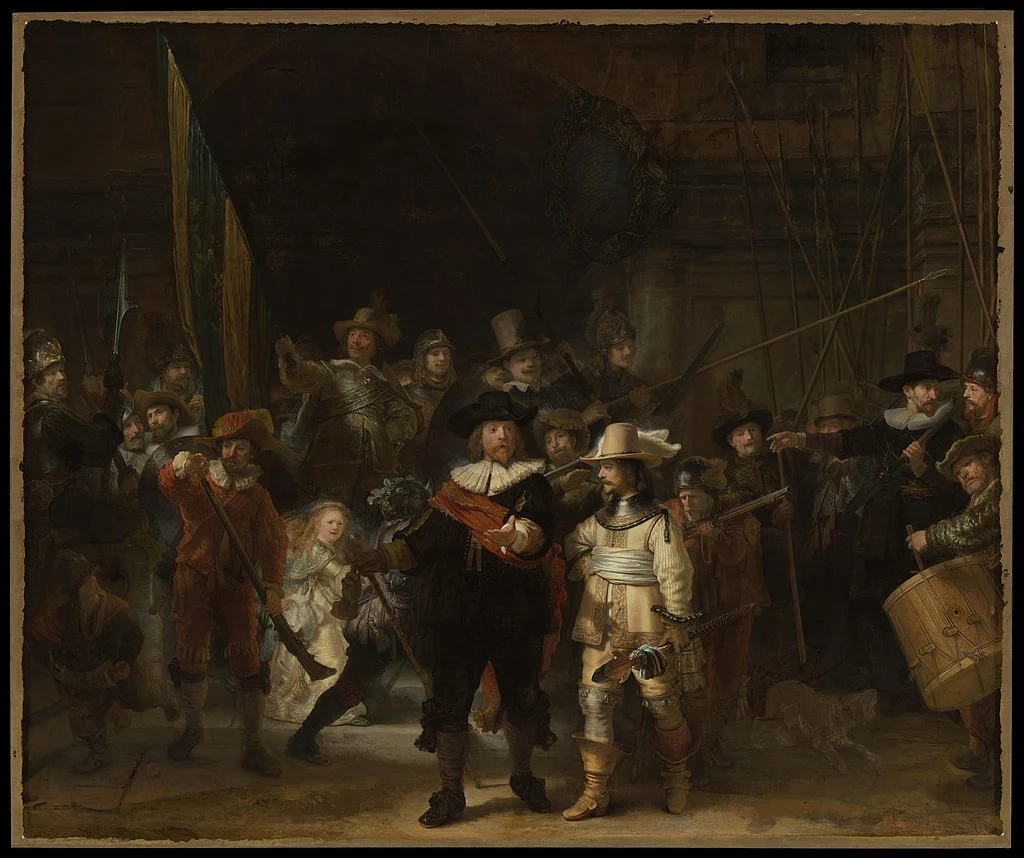
The Night Watch, painted by Rembrandt van Rijn in 1642, is considered a mysterious painting due to its complex symbolism, hidden meanings, and the many questions it raises about the subjects depicted in the painting.
One of the most mysterious aspects of the painting is the identity of the subjects. The painting is believed to depict a group of Dutch militia, but the individuals in the painting have never been identified. This has led to speculation about the identities of the people in the painting and the reasons for their inclusion.
Another reason why it needs to be on the most mysterious paintings shortlist is the symbolism. The painting is filled with symbols and imagery that are open to interpretation. For example, the dog in the painting is thought to symbolize loyalty and devotion, but it could also be interpreted as a symbol of the dangers of blindly following authority. Additionally, the painting’s composition is unusual, with the figures arranged in a dynamic and seemingly haphazard way, which gives a sense of movement and energy.
The Night Watch also raises questions about Rembrandt’s intentions. It is not known why he chose to show the subjects in such a dramatic and mysterious way. Some art historians believe that Rembrandt was trying to convey a deeper meaning through the painting, while others believe that he was simply experimenting with new techniques and styles.
The Rokeby Venus by Diego Velázquez
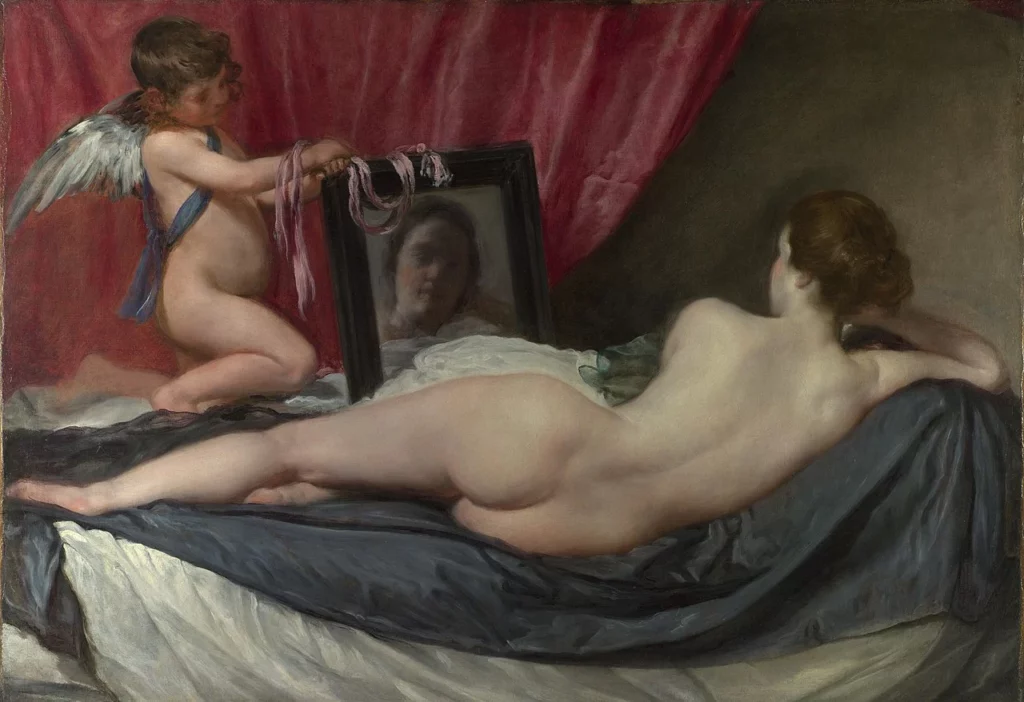
The Rokeby Venus, painted by Diego Velázquez in the early 1650s, belongs to the most mysterious paintings list as well due to its ambiguous meaning, hidden symbolism, and the many questions it raises about the subject depicted in the painting.
One of the most mysterious aspects of the painting is the identity of the subject. The painting illustrates a woman, believed to be the Roman goddess, Venus, as she is depicted in a mirror. However, the identity of the woman in the painting remains a mystery. This has led to speculation about the identity of the subject and the reasons for her inclusion in the painting.
Another mysterious aspect of the painting is the symbolism. For example, the mirror in the painting is thought to symbolize vanity and self-reflection, but it could also be interpreted as a symbol of the viewer’s own voyeurism. Additionally, the composition of the painting is unusual, with Venus being shown in a seemingly candid and intimate manner, which gives a sense of vulnerability and intimacy.
The Rokeby Venus also raises questions about Velázquez’s intentions. It is unknown why he depicted Venus in such a candid and intimate way, and why he chose to include a mirror in the painting. Some art historians believe that Velázquez was trying to convey a deeper meaning through the painting, while others believe that he was simply experimenting with new techniques and styles.
These five artworks are some of the most mysterious paintings in history. They have captivated audiences for centuries and continue to inspire debate and speculation. They are a testament to the power of artworks to evoke emotion and provoke thought. In conclusion, the above paintings are not just pieces of art but are also a reflection of the artist’s inner thoughts and emotions which makes them mysterious in many ways.

